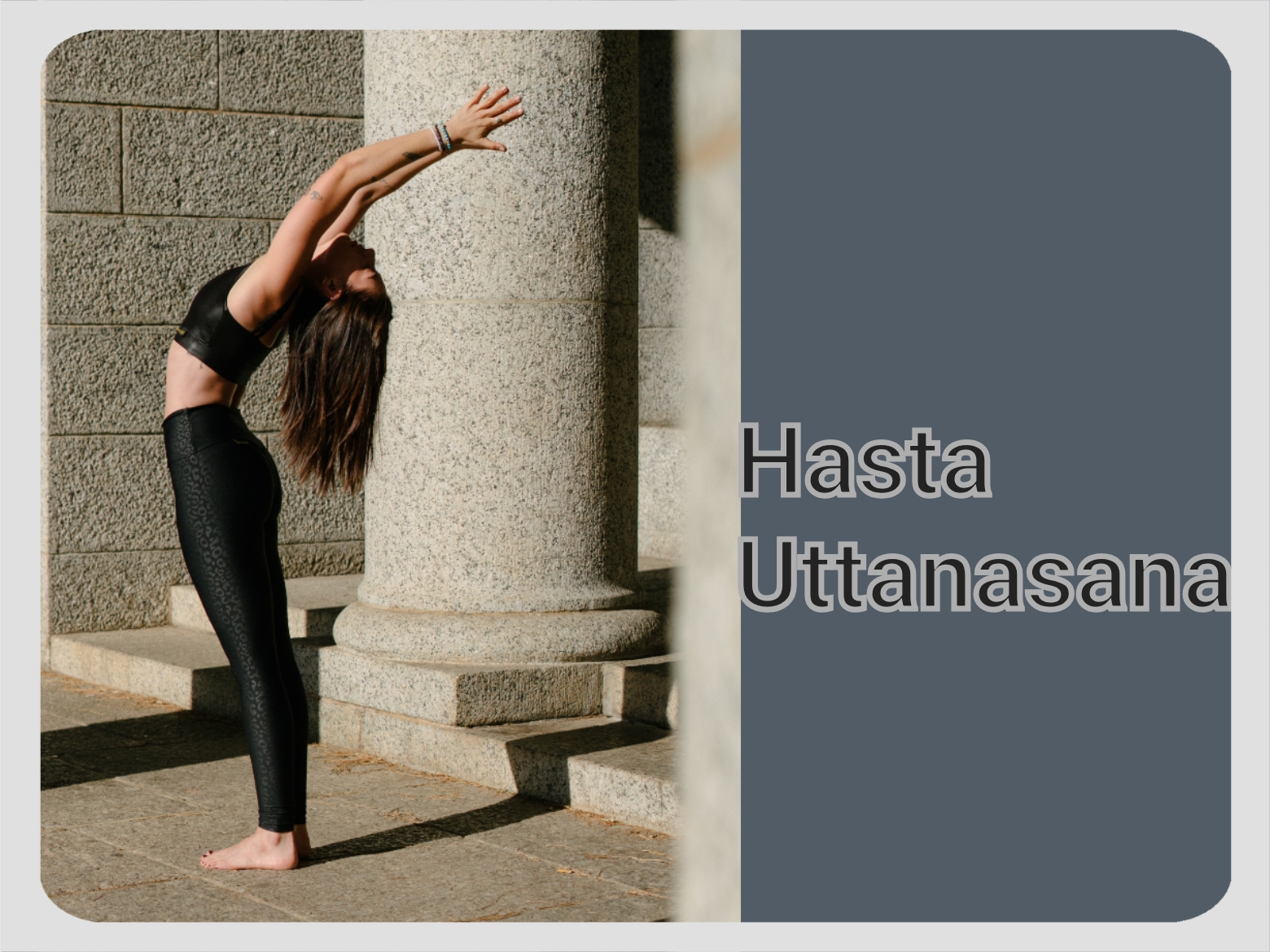Hasta Uttanasana (Rised Arms Pose)
Hasta Uttanasana is an important yoga practice among the standing postures. It also has an important place in the Surya Namaskar module. This yoga is also called Standing Back Bend.
Practicing this warms up and strengthens the muscles that support your spine, and it also opens up your chest and expands your shoulders.

In Hasta Uttanasana, your hands remain raised upwards. While doing this asana, an effort is made to keep the thighs, waist, and the rest of the upper body stable by pulling the ribs of your entire body.
This asana can help reduce vibrations, flex the muscles of the body, and activate nerve endings.
How to practice Hasta Uttanasana
1. Stand with your feet raised. Straighten and loosen the shoulders down.
2. Raise your hands to the sky, palms facing your head, keeping your arms by your ears.
3. While inhaling, pull your body up to the highest point in the asana.
4. While bending the upper part of the body forward, pay attention to your waist, try to push the whole waist forward.
5. While slowly releasing the position, allow your arms and shoulders to slowly lower down.
6. Slowly exhale to bring the whole body back to normal position.
Benefits of Hasta Uttanasana
Body Workout: This asana helps in exercising the whole body, especially strengthens the back, shoulders, breasts, and abdomen.
Physical health: Hasta Uttanasana strengthens the back muscles and improves body composition.
Improves Digestion: This posture gives strength to the digestive fiber, which makes it possible to digest the food well.
Strengthening of the trachea: Hasta Uttanasana increases the strength of the trachea and improves lung capacity.
Brain Stimulation: This asana promotes brain activity and improves mental state.
Beneficial for the heart: Hasta Uttanasana improves heart function and improves blood circulation.
Waist and abdominal strength: This asana gives an opportunity to exercise the muscles of the waist and abdomen, which strengthens them.
Relaxation and resolution of stress: Hasta Uttanasana provides calmness in the state of relaxation and helps in reducing stress.
Improves flexibility of the body: This asana promotes flexibility of the body thereby reducing pain and stiffness.
What does Hasta mean in yoga?
In yoga, “Hasta” refers to the hand or arm. It comes from the Sanskrit word (hasta), which is often used to describe various yoga poses that involve specific hand or arm positions. For example, Hasta Uttanasana, as we discussed earlier, involves raising the hands overhead.
Similarly, there are other yoga poses with “Hasta” in their names, each focusing on different hand or arm movements and placements. The term “Hasta” is used to indicate the significance of the hand’s role in these particular poses.
Precautions
It is extremely important to observe the following precautions while performing Hasta Uttanasana:
Serial problem: Individuals with any serial problem or injury of the back should avoid doing Hasta Uttanasana.
Heart patients: Individuals with heart-related problems should take the advice of beginner level of yoga and they should take care that they do not exert themselves excessively.
Pregnancy: Pregnant women should consult a doctor before doing Hasta Uttanasana.
Back Problems: Individuals with any kind of back problems should be careful while performing the asana and avoid excessive pressure.
Hypertension: People with high blood pressure should avoid doing this asana and should note that they should not work too hard.
Leg pressure: If one has a problem with leg pressure, he can try to do Hasta Uttanasana slowly.
Frequently Asked Questions
What is the benefits of Hasta Uttanasana?
Hasta Uttanasana, also known as the Raised Hands Pose in yoga, offers several benefits, such as stretching the spine, improving posture, and expanding the chest, which can enhance breathing capacity. It also helps to relieve tension in the shoulders and neck, while promoting blood circulation and digestion. Practicing this pose regularly can contribute to increased flexibility and a sense of relaxation.
How to do Hasta Uttanasana step by step?
Start by standing in Tadasana (Mountain Pose) with your feet together and arms relaxed by your sides. Inhale deeply as you raise your arms overhead. Keep your palms facing inward, and interlock your fingers if you prefer. Stretch your arms, shoulders, and chest upward, lengthening your spine. Try to avoid arching your back excessively.
How many minutes should I do Hasta Uttanasana?
Hasta Uttanasana, or the Raised Atms Pose in yoga, is typically held for 30 second to 1minute. Remember to focus on your breath and listen to your body during the practice. If you're new to the pose, start with a shorter duration and gradually increase it as you become more comfortable.
Does Hasta Uttanasana increase height?
Hasta Uttanasana, or the Raised Arms Pose, is a yoga pose that stretches the spine and the entire body.
Read Also
- What is Bandha (Energy Locks) in yoga: Types and Benefits
- How to do Surya Namaskar (Sun Salutation)? Benefits & Steps
- Setu Bandhasana (Bridge Pose)- Benefits & Steps
- Trikonasana (Triangle Pose)- Benefits And Steps
- Benefits of Badha Konasana (Butterfly Pose)- How to Do it?